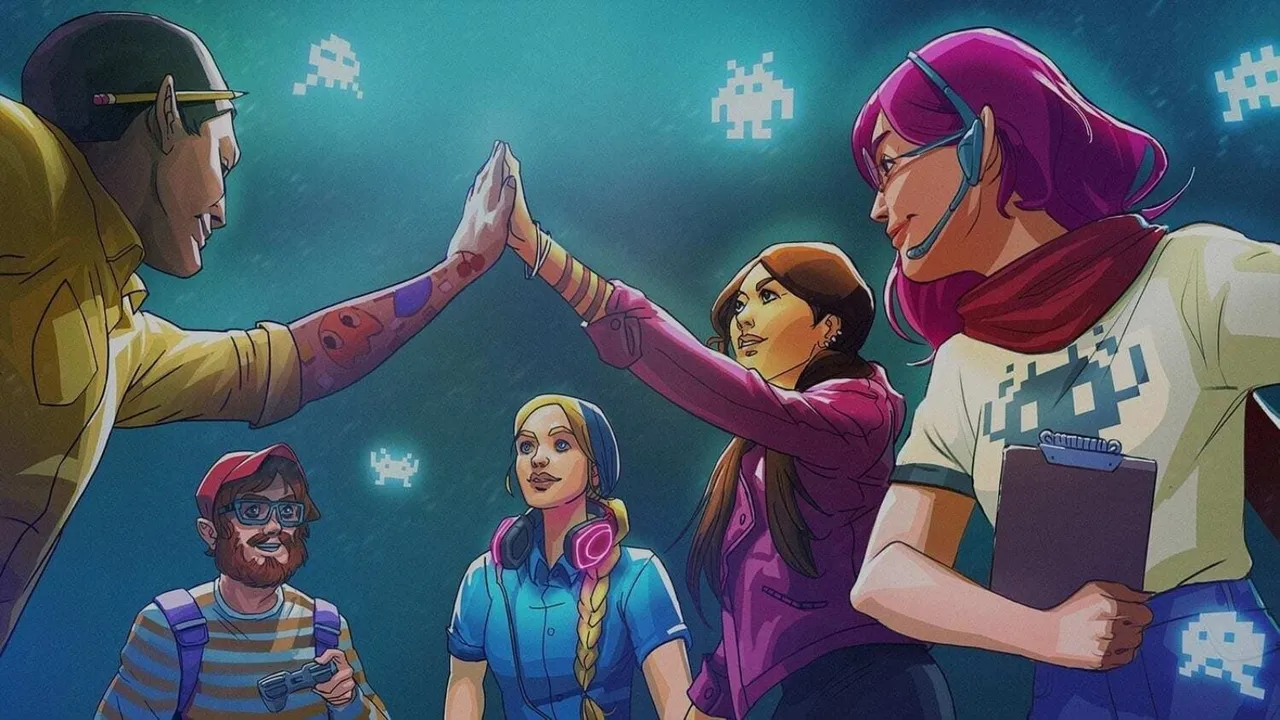Art and Animation Jobs in the Video Game Industry: An Overview

Introduction
The video game industry is a booming market, with its global value expected to reach $200 billion this year. As the demand for high-quality, immersive gaming experiences continues to rise, so does the need for talented artists and animators to bring these virtual worlds to life. This article delves into the various art and animation roles available in the video game industry, the qualifications needed to land these jobs, and the skills required to excel in this fast-paced, competitive field.
Concept Artists: The Imaginative Visionaries
Concept artists play a critical role in the early stages of video game development, as they are responsible for translating ideas into visually striking images. They work closely with game designers to create characters, environments, and props, setting the overall visual tone for the game. To succeed as a concept artist, a strong foundation in traditional art techniques is essential, as well as proficiency in digital art software like Adobe Photoshop or Corel Painter. A degree in illustration, fine arts, or a related field can be helpful, but a well-rounded portfolio showcasing a range of styles and subjects is often more important for securing a job.
You can access all of the concept artist jobs we have on Hitmarker here and do a deeper dive into pursuing a career in concept art here or storyboard art here.
3D Modelers: Crafting the Digital World
3D modelers turn the concept art into three-dimensional assets that can be used in the game engine. They create characters, props, and environments by sculpting digital meshes, and are responsible for ensuring that these assets are optimized for real-time rendering. Modelers often specialize in either organic (characters and creatures) or hard-surface (props and environments) modeling, with some focusing on both. A degree in 3D modeling or animation can be beneficial, but a strong portfolio demonstrating technical proficiency and artistic ability is crucial for breaking into the industry.
You can see all of the 3D modeling jobs we have on Hitmarker by clicking here and do a deeper dive into pursuing a career in model art here.
Texture Artists: Bringing Detail to Life
Texture artists add color and detail to the 3D models created by the 3D modelers, making them appear realistic and visually appealing. They create textures by painting directly onto the 3D models or by using 2D image editing software like Adobe Photoshop. To succeed in this role, an understanding of color theory, lighting, and material properties is vital. A degree in digital art, graphic design, or a similar discipline can be advantageous, but a solid portfolio showcasing a variety of textures and styles is key to landing a job.
Check out all of the texture artist opportunities we have on Hitmarker here and do a deeper dive into pursuing a career in 2D art here or 3D art here.
Animators: Breathing Life into Characters
Animators are responsible for making characters and creatures move convincingly and naturally within the game world. They use keyframe animation or motion capture techniques to create fluid, lifelike movements, taking into account factors such as weight, balance, and timing. A strong understanding of anatomy, physics, and acting is essential for success in this role. While a degree in animation or a related field can be helpful, an impressive demo reel that demonstrates a range of animation styles and techniques is often more important for securing a position.
See all of the animation vacancies we have on Hitmarker by clicking here and do a deeper dive into pursuing a career in animation here.
Rigging Artists: Building the Framework for Movement
Rigging artists create the underlying skeletal structure (rig) and controls for 3D characters and creatures, which allows animators to manipulate their movements. They need to have a deep understanding of anatomy, kinematics, and deformation, as well as technical knowledge of the specific game engine being used. A degree in computer animation or a related field can be beneficial, but a solid portfolio showcasing a variety of character rigs is crucial for landing a job in the industry.
View all of the rigging artist jobs we have on Hitmarker here.
Technical Artists: Bridging Art and Technology
Technical artists serve as the link between the art and programming teams, helping to optimize and streamline the art pipeline. They often have a strong understanding of both art and programming, as they create custom tools, shaders, and scripts to improve workflow efficiency and ensure that artistic assets meet the technical requirements of the game engine. A degree in computer science or a related field is helpful, but a diverse portfolio demonstrating technical skills and problem-solving abilities is vital for securing a job.
Take a look at all of the technical artist openings we have on Hitmarker here and do a deeper dive into pursuing a career in technical art here and or visual effects (VFX) here.
In Summary
The video game industry offers a wide range of opportunities for artists and animators to showcase their talents and contribute to the creation of engaging, immersive gaming experiences. Although formal education in fields such as illustration, animation, or computer science can be beneficial, a strong portfolio or demo reel that demonstrates artistic ability, technical proficiency, and versatility is often the most crucial factor in landing a job.
To succeed in the competitive video game industry, aspiring artists and animators should continually refine their skills, stay up-to-date with the latest software and technology, and network with other professionals in the field. Participating in game jams, attending industry events, and joining online communities can help build connections and increase visibility.
As the video game market continues to grow, the demand for skilled artists and animators shows no signs of slowing down. By honing their craft and adapting to the ever-evolving landscape of the industry, these creative professionals can find rewarding careers in a field that combines artistry with cutting-edge technology.
You can check out all of the art and animation jobs we have available on Hitmarker by clicking here and learn what makes a great game art portfolio here.
-
 Landing a Summer Internship in the Video Game Industry: The Ultimate Quick Guide
Landing a Summer Internship in the Video Game Industry: The Ultimate Quick Guide -
 Entry-level Jobs in the Video Game Industry: The Ultimate Guide
Entry-level Jobs in the Video Game Industry: The Ultimate Guide -
 Junior-level Jobs in the Video Game Industry: The Ultimate Guide
Junior-level Jobs in the Video Game Industry: The Ultimate Guide -
 Intermediate-level Jobs in the Video Game Industry: The Ultimate Guide
Intermediate-level Jobs in the Video Game Industry: The Ultimate Guide -
 Senior-level Jobs in the Video Game Industry: The Ultimate Guide
Senior-level Jobs in the Video Game Industry: The Ultimate Guide -
 Getting into gaming: Strategies for landing your first game development job with Katherine Mould of Keywords Studios
Getting into gaming: Strategies for landing your first game development job with Katherine Mould of Keywords Studios -
 Art and Animation Jobs in the Video Game Industry: An Overview
Art and Animation Jobs in the Video Game Industry: An Overview -
 Business Operations Jobs in the Video Game Industry: An Overview
Business Operations Jobs in the Video Game Industry: An Overview -
 Communications and Marketing Jobs in the Video Game Industry: An Overview
Communications and Marketing Jobs in the Video Game Industry: An Overview -
 Content Creation Jobs in the Video Game Industry: An Overview
Content Creation Jobs in the Video Game Industry: An Overview -
 Game Design Jobs in the Video Game Industry: An Overview
Game Design Jobs in the Video Game Industry: An Overview -
 Game Development Jobs in the Video Game Industry: An Overview
Game Development Jobs in the Video Game Industry: An Overview